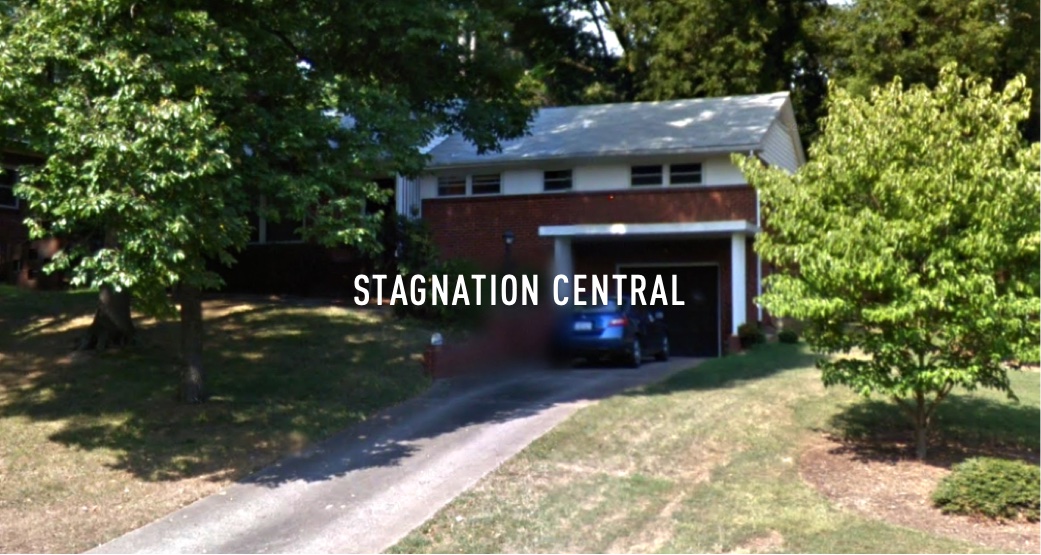
“PEOPLE CRAVE MORE STABILITY AS THEY GET OLD.” So said a politician in an article I was reading. My reaction was, “Really? Well, maybe for a lot of people, but not for me.”
I’m 70 years old and about ten years ago I got fed up with my lifetime of stability. Stability had become stagnation, and it was eating at my brain and my soul. I had become a self-loathing lump.
I wanted to shake things up. I had gotten involved in new hobbies and learned new marketable skills, but I was still circling the same familiar, comfortable drain. I needed a bigger change.
I could move to a different part of the country. It had been a bit of a spark the previous times I had done that. Heck, I could move to a different part of the planet. That would really be a change. But I knew myself well enough to know being anchored in one place would soon lead to stagnation again — just in a different location.
So, keep moving? Ummmmm… yeah. If stability was killing me, then why not try voluntary instability?
And it has worked. So far. My mental and physical health are much better. I’m not just passing time until the day that time ceases to pass for me. And, in a paradoxical way, instability has become my own version of stability. I have adopted a slogan, borrowed from 3M’s description of the adhesive used on Post-It Notes:
PERMANTLY IMPERMANENT
It turns out I’m a wanderer, not a settler. I had been living the wrong life for six decades. I’m like Ryan Bingham in “Up in the Air” who felt at home on the road but who was uncomfortably lost whenever he was back “home” in his condo. The difference (besides the entire rest of that movie’s plot and George Clooney’s good looks) is that I travel in my home. That’s where I’m mentally and emotionally stable. Because I’m always free to go.


I love this, thanks Al. You said what I feel, but others don’t understand. I will forward it to my friends and family as a way to explain my mindset. I am a wanderer! At 81 they worry about me. Let me worry, and leave me alone, please. ? Stop deciding my life for me, thank you very much family. Just me inside of my minivan and I am in my Happy Place. ?♀️
Great reply and attitude! Thanks Sharon.
I just tuned 73 and have started feeling old, which is quite unusual for someone like me who is usually a spritely get-up-and-go-girl … I’m beginning to think it’s the seemingly comfort of stability turning into stagnation.
Thanks for the gentle “boot”.
Thanks. I’m glad you’re writing. And thanks Sharon for your comment. 81! Yeah!
Thanks, Margo. I sure don’t feel 81, but I guess I look it. Hah!
Al….anywhere we can see your layout/setup ? Thanks.
I can do a post on that.
Al, U surely had a wonderful ‘ stagnation central’ . How could you abandone such beauty surrounded by nature ??
At age 76 I seem to be cherishing the much simpler full time rver life than ever before. It would be wonderful to see a more detailed walk through of your home on wheels. I am currently looking at much smaller rigs than my 24 foot Arctic Fox 22h. Over half my rig is completely empty and I want to get smaller.
Old fat man, hi ! Couldn’t that Arctic Fox empty half be filled with a cute little puppy, or a kitty ? ? Just saying…
Sorry but dog and cat allergies prevent that.
Well written!
Well said Al! Thank you ?
This is how I feel at 50 yrs old and have always felt. I don’t like the norm of a brick n mortar 9-5 job thing. I raised my 2 kids and hit the road as a truck driver. I’ve been living mostly in whatever truck I drive for the last 8yrs and the thought of going back full-time into a brick home makes me sad and my stomach upset. I plan to use your writing here to better explain to my family why I won’t do the normal thing. Thank you so much!
There was a time misfits like us would be cast out of the tribe. And we would thank them for it.
I turn 71 in a few weeks.
I think I must have some sort of inherent disability… I avoid stand-still houses like the plague (not that fake ‘2019 plague’ nincompoopery, a real plague).
.
Inside a stand-still house, I develop the heebie-jeebies, I get vaporous.
Witnesses claim I am often seen running in tiny circles frantically flapping my arms at imaginary gnats escaping from the hundreds of jam-packed closets.
.
My hair falls out in hands-fulls.
My toes curl.
My eye-brows compensate for my increasingly-shiny dome by turning into fierce rodents.
And some say my gentle benevolent nature goes whacky.
.
So I don’t.
Well said. Couldn’t agree more